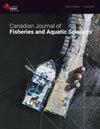在微塑料研究中需要避免 "苹果与橙子 "之间的比较
IF 2.2
2区 农林科学
Q2 FISHERIES
Canadian Journal of Fisheries and Aquatic Sciences
Pub Date : 2024-06-04
DOI:10.1139/cjfas-2023-0325
引用次数: 0
摘要
加拿大渔业和水产科学杂志》,提前出版。 在此,我们讨论 Hataley 等人最近进行的微塑料风险评估中的几个关键问题(2023.Can.J. Fish.Aquat.Scie 80 (10):1669-1678)对五大湖生态系统进行的风险评估中的几个关键问题。首先,我们注意到风险特征描述不正确,这是由于将暴露和影响数据统一起来所需的计算参数以及生物可及性临界值的校正出现了错误。其次,风险评估中缺乏对不确定性的量化引起了人们的关注。以前采用类似方法进行的评估对计算中出现的不确定性进行了处理,揭示了风险特征描述中固有的概率不确定性可以达到很大的量级。第三,我们强调了在淡水环境中使用为海洋系统设计的物种敏感性分布(SSDs)存在的问题。我们强调了使用包含相关淡水物种数据的 SSD 的重要性,并确定了提供此类数据供未来风险评估使用的最新研究。根据之前公布的评估结果,我们建议采取措施减少塑料碎片向流域的排放,并建议采取研究、监测和缓解策略来应对水质面临的潜在威胁。本文章由计算机程序翻译,如有差异,请以英文原文为准。
On the need to avoid apple-to-orange comparisons in microplastic research
Canadian Journal of Fisheries and Aquatic Sciences, Ahead of Print.
Here, we discuss several key issues in the recent microplastic risk assessment conducted by Hataley et al. (2023. Can. J. Fish. Aquat. Scie 80 (10): 1669-1678) for the Great Lakes ecosystem. First, we note that the risk characterizations are incorrect due to errors in parameterizations of the calculations necessary to align exposure and effects data, as well as the corrections for bioaccessibility cutoffs. Second, the lack of quantification of uncertainty in the risk assessment raises concerns. Previous assessments that employed similar methods addressed uncertainties arising from the calculations, revealing that the probabilistic uncertainty inherent in risk characterization can span significant magnitudes. Third, we highlight the problematic use of species sensitivity distributions (SSDs) designed for marine systems in a freshwater context. We emphasize the importance of utilizing SSDs that incorporate relevant freshwater species data, and identify recent studies that provide such data for use in future risk assessments. Based on a previously published assessment, we suggest initiating measures to reduce the release of plastic debris into the watershed and advise research, monitoring, and mitigative strategies to address potential threats to water quality.
Here, we discuss several key issues in the recent microplastic risk assessment conducted by Hataley et al. (2023. Can. J. Fish. Aquat. Scie 80 (10): 1669-1678) for the Great Lakes ecosystem. First, we note that the risk characterizations are incorrect due to errors in parameterizations of the calculations necessary to align exposure and effects data, as well as the corrections for bioaccessibility cutoffs. Second, the lack of quantification of uncertainty in the risk assessment raises concerns. Previous assessments that employed similar methods addressed uncertainties arising from the calculations, revealing that the probabilistic uncertainty inherent in risk characterization can span significant magnitudes. Third, we highlight the problematic use of species sensitivity distributions (SSDs) designed for marine systems in a freshwater context. We emphasize the importance of utilizing SSDs that incorporate relevant freshwater species data, and identify recent studies that provide such data for use in future risk assessments. Based on a previously published assessment, we suggest initiating measures to reduce the release of plastic debris into the watershed and advise research, monitoring, and mitigative strategies to address potential threats to water quality.
求助全文
通过发布文献求助,成功后即可免费获取论文全文。
去求助
来源期刊

Canadian Journal of Fisheries and Aquatic Sciences
农林科学-海洋与淡水生物学
CiteScore
4.60
自引率
12.50%
发文量
148
审稿时长
6-16 weeks
期刊介绍:
The Canadian Journal of Fisheries and Aquatic Sciences is the primary publishing vehicle for the multidisciplinary field of aquatic sciences. It publishes perspectives (syntheses, critiques, and re-evaluations), discussions (comments and replies), articles, and rapid communications, relating to current research on -omics, cells, organisms, populations, ecosystems, or processes that affect aquatic systems. The journal seeks to amplify, modify, question, or redirect accumulated knowledge in the field of fisheries and aquatic science.
 求助内容:
求助内容: 应助结果提醒方式:
应助结果提醒方式:


